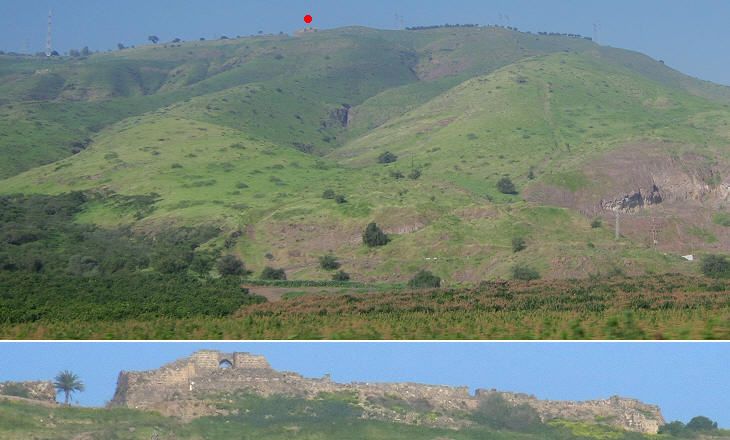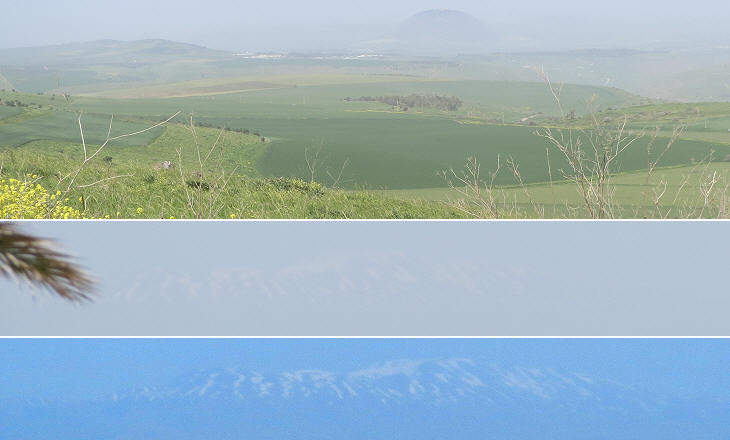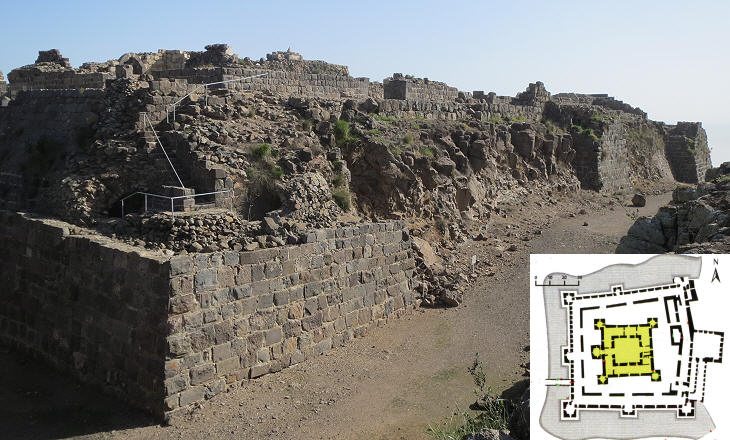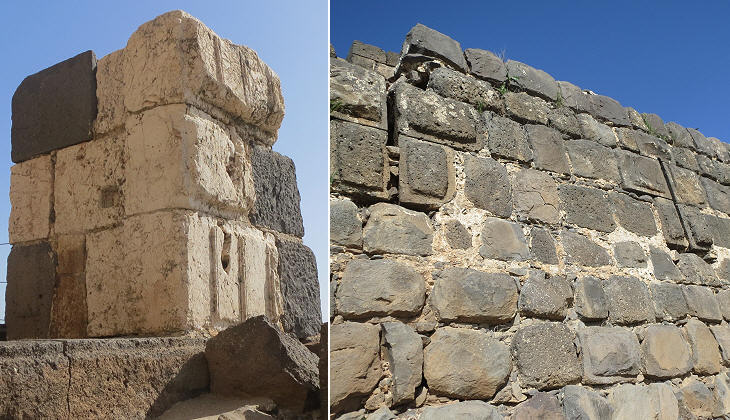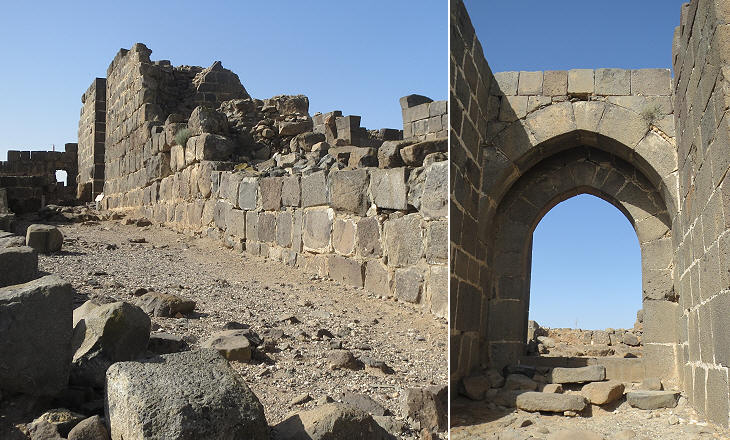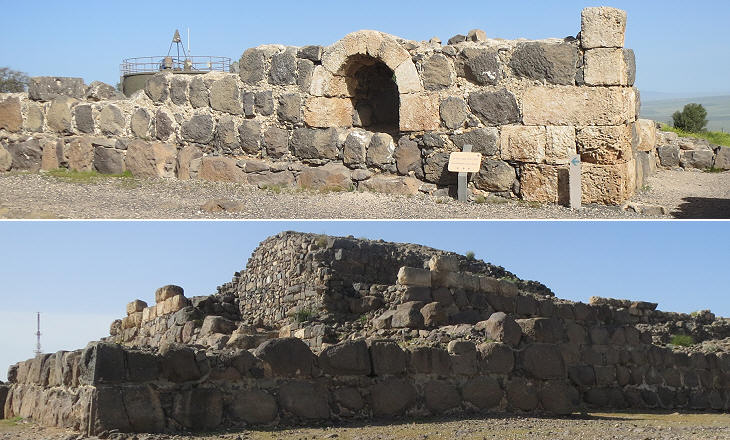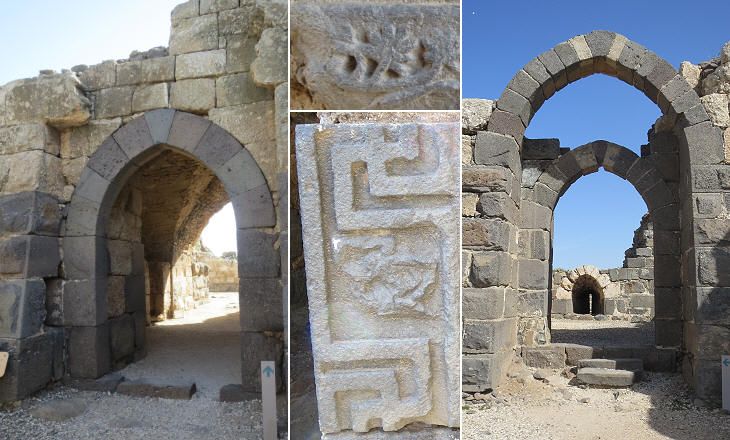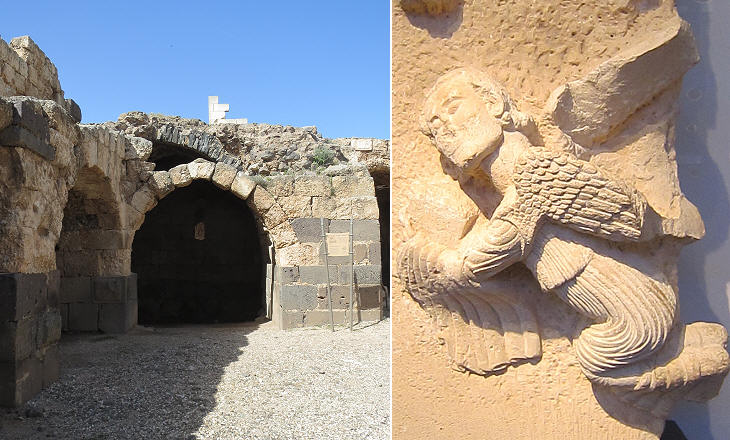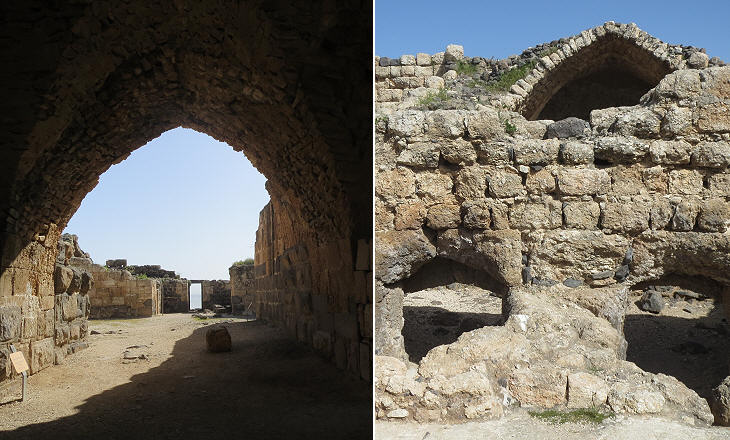  What's New! Detailed Sitemap All images © by Roberto Piperno, owner of the domain. Write to romapip@quipo.it. Text edited by Rosamie Moore. Page added in May 2013. |
 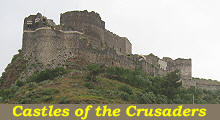 - Belvoir (Kokhav Hayarden) - Belvoir (Kokhav Hayarden)(Castle of Marqab) If you came to this page directly, you might wish to read an introductory page first.
The fortress of Belvoir stands at a height of 312 m/873 ft, but because the River Jordan valley is some 200 m/560 ft below the level of the sea, the attackers had to climb 500 m/1400 ft to reach the eastern walls of the fortress. Although the latter is in ruin, judging from the number of Israeli military cars and trucks I met on my walk to the top, the hill of Belvoir is still fortified, although in a hidden way, as it stands very near the border with Jordan.
The fortress was known as Belvoir or Belvader (Fair View) because it had commanding views over northern and eastern Galilee, in addition to that over the (usually hazy) River Jordan valley. The fortress was built by the Knights of St. John in 1168 to prevent an attack on Jerusalem from the River Jordan valley. At that time the river did not mark the border of the Kingdom of Jerusalem, which included a large territory beyond it (Oultrejordain in Old French). The Knights of St. John were a military order which originated from a brotherhood founded at Jerusalem by Amalfi merchants and named after St. John the Baptist. Because of their activity in favour of the pilgrims, the Knights were also known as the Hospitallers. The military aspect of the order acquired a major importance towards the end of the XIIth century, when the Muslim threat on the Crusader States increased. They were entrusted with the defence of key fortresses such as Krak des Chevaliers and Marqab in Syria.
Unlike many other fortresses of the region, Belvoir was neither built upon a previous fortification, nor did it exploit a natural defence such as a ravine. The top of the hill was almost flat and therefore it provided an opportunity to design a state-of-the-art fortress. It was made up of two square enclosures. Each side of the external one was protected by three towers.
The three sides not overlooking the valley were protected by a moat; the defenders could make surprise sallies from small gates at the foot of the towers. Because the openings are so small and could be reached only through narrow stairs we can assume that the objectives of the sallies were very limited, such as setting fire to siege towers or other siege engines.
The fortress was built by employing black volcanic stones, but for arches and gates a limestone was utilized to lighten the overall appearance of the complex. Some details, such as the arrow slits are very similar to those one can see at Nimrod Castle, a Muslim fortress built a few years after Belvoir. The image used as background for this page shows a capital found inside the fortress.
The eastern side of the fortress had a complex design with two gates and a long passage between them. Relations between the Kingdom of Jerusalem and Saladin, Sultan of Egypt and Syria, were tense at the time the fortress was built. The vassals of the King of Jerusalem acted as independent sovereigns and some of them did not hesitate to attack caravans on their route to Mecca or make cattle-raids in Muslim territories. Other vassals instead established peaceful relations with Saladin.
In 1187 Saladin laid siege to Tiberias, in response to Crusader attacks on Muslim caravans en route to Damascus. The King of Jerusalem marched on Tiberias with a large army, but he was defeated at Hattin and taken prisoner. Saladin did not leave the enemy time to reorganize and he speedily seized Jerusalem and Acre, the main port of the kingdom.
In his move towards Jerusalem Saladin did not enter the River Jordan valley and Belvoir was sieged only after the fall of the capital. The siege lasted until 1189 when the attackers managed to conquer a huge outer tower on the eastern side of the fortress. At this point the Knights surrendered. In 1220 the remains of the fortress were razed to the ground by the Sultan of Damascus who feared that a new crusade could restore the Kingdom of Jerusalem to its previous state.
The external walls protected a small square fortress with a tower at each corner. It is unlikely this fortification could withstand a siege and as a matter of fact the Knights surrendered without attempting a last resistance within its walls. The inner fortress housed the barracks and facilities where the Knights lived. A church in the courtyard was decorated with reliefs of which only a small fragment was found during the excavations which were carried out in 1966-68.
It is but a nest of eagles and the dwelling place of the moon. XIIIth century Muslim historian Go to: Introductory page Bakras Kalesi Crak des Chevaliers Marqab Safita Saone Tartous and Arwad Cyprus fortresses  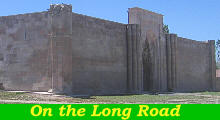 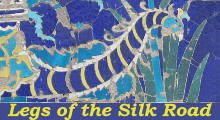 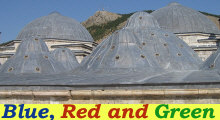
|
